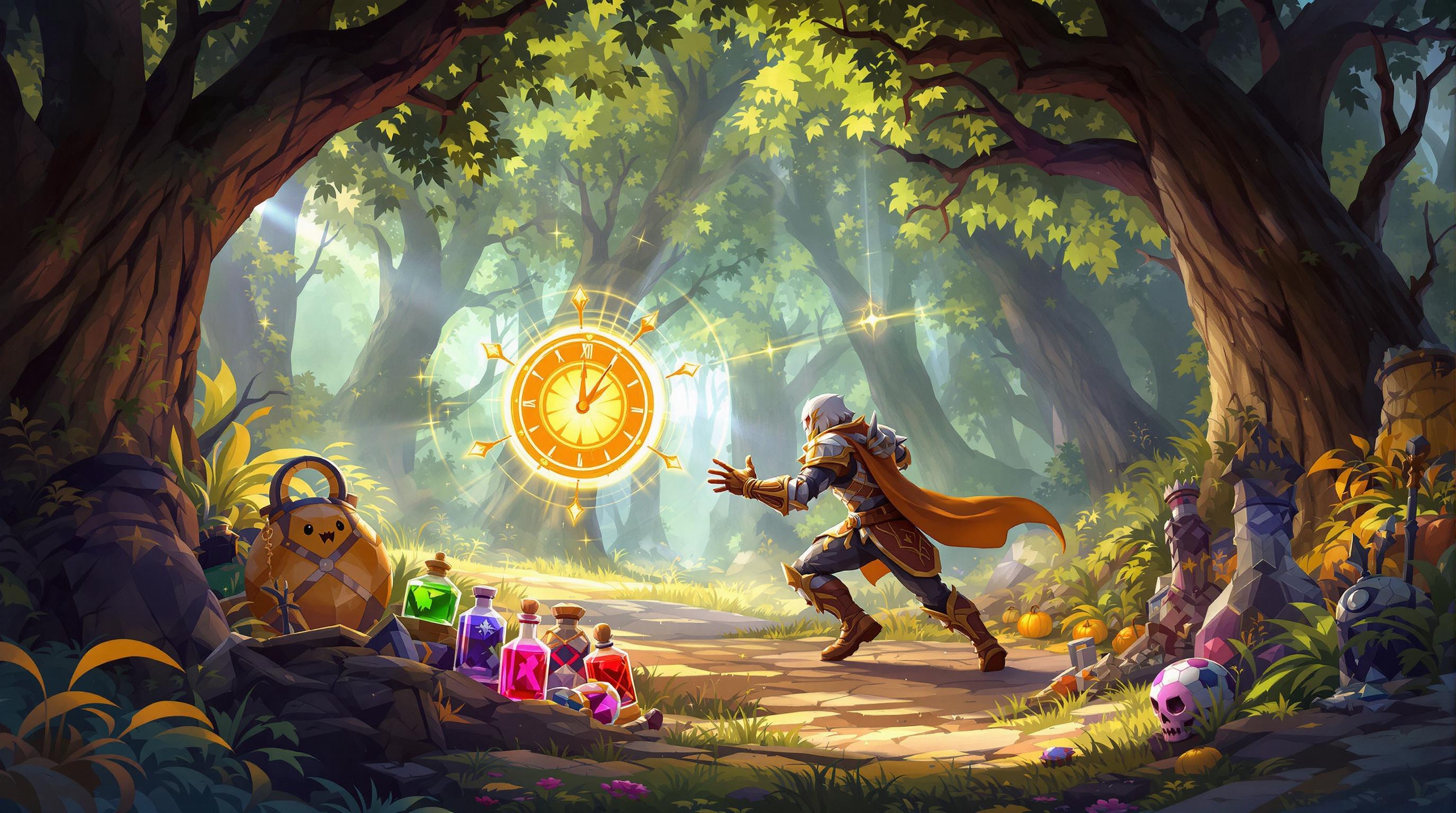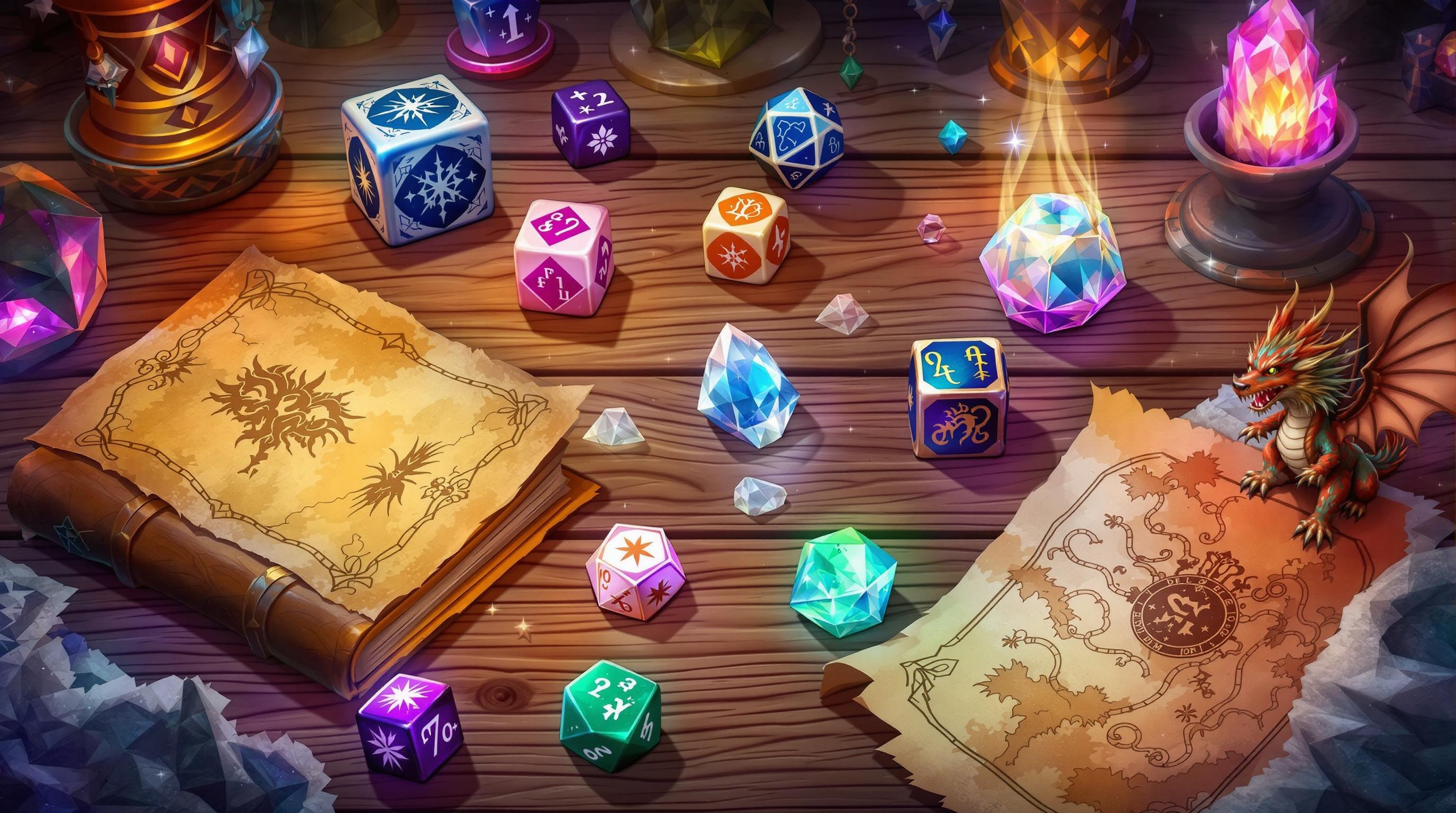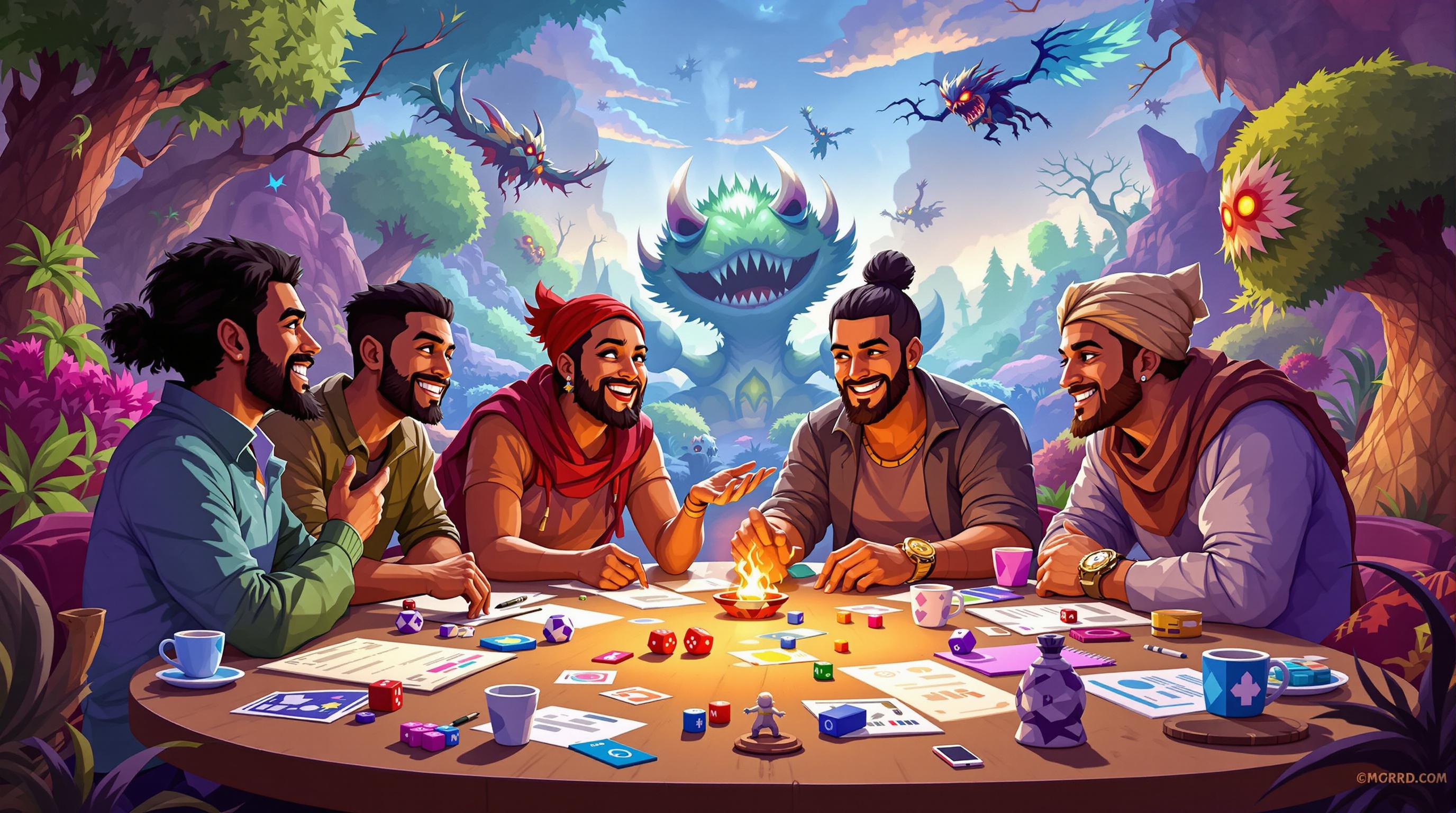Objects in tabletop RPGs are more than just tools - they shape player decisions, deepen storytelling, and bring the game world to life. Here's how they do it:
- Guide Choices: Items like glowing orbs or locked chests prompt players to act, driving the story forward.
- Enhance Storytelling: Objects can reveal lore, set the tone, or create emotional connections (e.g., a royal crest on a rusted sword ties to history).
- Encourage Creativity: Everyday items like ropes can solve problems in multiple ways - climbing, trapping, or signaling allies.
- Impact Gameplay: Weapons, tools, or consumables influence strategies, while environmental objects (like mirrors or torches) shape interactions.
Game Masters can use objects strategically to create memorable moments, from plot-driving artifacts to environmental storytelling. When introduced thoughtfully, objects enrich gameplay and immerse players in the narrative.
Objects and Player Actions
Objects as Drivers of Player Choices
Objects in tabletop RPGs play a key role in shaping player decisions. When players come across items, they explore different ways to interact with them, which can significantly influence the outcome of the game.
Physical objects spark immediate engagement. Take a simple rope found in a dungeon, for example - it could be used to:
- Build a makeshift bridge over a chasm
- Set a trap for chasing enemies
- Climb a difficult surface
- Restrain captured foes
- Signal allies from a distance
These examples show how objects can go beyond being mere tools, adding depth to gameplay and encouraging players to think creatively.
Objects often inspire problem-solving. A locked door might be dealt with using a crowbar, lockpicks, or even explosives, depending on the players’ approach.
How Players Interact with Objects
Research breaks down player-object interactions into three main types:
| Interaction Type | Description | Impact on Story |
|---|---|---|
| Practical Use | Applying objects to solve immediate challenges | Creates tactical options and immediate results |
| Story Investigation | Using objects to uncover plot details or lore | Pushes the narrative forward and reveals the world |
| Character Expression | Objects reflecting a character’s personality | Adds depth to role-playing and character development |
This breakdown highlights the importance of context and presentation in making objects meaningful during gameplay.
Players are more likely to engage with objects that offer multiple possibilities. For instance, a mysterious amulet might function as a magical tool while also serving as a key plot element. This kind of dual purpose enriches the gaming experience.
The success of objects in influencing player choices often depends on how they're introduced. When objects are seamlessly integrated into the environment and their potential uses are clear, players are more inclined to interact with them in meaningful ways. For example, placing a sturdy shield in a room before a dragon fight can suggest defensive strategies without dictating specific actions.
Environmental objects also shape player strategies. The availability - or lack - of certain items can drastically change how players tackle challenges. A room filled with furniture might encourage players to build barricades or use objects as improvised weapons, while an empty space might push them toward different tactics.
Creative uses of objects lead to unforgettable moments in gameplay. These unique solutions often surprise both players and GMs, leaving a lasting impression.
Object Categories and Their Effects
Tools, Weapons, and Equipment
Objects in RPGs play a key role in shaping player interaction, influencing strategies and decision-making. Here’s a breakdown of common categories and their impact:
| Object Type | Role | Influence |
|---|---|---|
| Combat Equipment | Resolving conflicts | Shapes combat strategies and engagement |
| Utility Tools | Problem-solving | Offers creative solutions to challenges |
| Consumable Items | Single-use benefits | Encourages resource management |
Combat equipment directly impacts tactics. For example, choosing between a heavy melee weapon or a ranged option alters how a character approaches battles.
Utility tools open up creative problem-solving opportunities. A toolkit with items like ropes, crowbars, or lockpicks allows players to tackle obstacles in multiple ways, but they’ll need to weigh the risks and rewards of each method.
Beyond their practical uses, some items are deeply tied to progressing the storyline.
Story-Driving Items and Clues
Certain objects are designed to push the narrative forward or deepen the game’s lore. These include:
- Plot Devices: Items like ancient artifacts, mysterious letters, or magical tools that advance the main story.
- Environmental Narratives: Objects that reveal background details about the world or its characters.
- Interactive Lore: Items players can engage with to uncover hidden story elements.
The impact of these items depends on how they’re presented. Instead of just describing them, games that allow meaningful interaction make the experience more engaging. For instance, a mysterious pendant that changes color near danger serves both as a plot device and a functional tool.
But objects don’t just drive the story - they also help define the game’s atmosphere.
Setting and Mood Objects
Environmental objects breathe life into the game world, helping players connect to it through visual and sensory details.
These objects turn ordinary settings into immersive environments:
- Lighting sources: Flickering torches or glowing crystals affect visibility and create tension.
- Furniture and decorations: Period-specific items establish the setting and hint at social dynamics.
- Natural elements: Details like overgrown vines or aging decor reflect the passage of time.
The placement of these objects can also guide player behavior. For example, a room filled with hiding spots encourages stealth, while weapon racks in an open space hint at an upcoming fight.
Environmental objects can also interact with players, enhancing immersion. A creaking floorboard might alert enemies, or a strategically placed mirror could reveal hidden dangers or paths. These subtle interactions enrich the experience without needing complex mechanics.
GM Tips for Object Use
Making Objects Matter
Game Masters (GMs) can use objects to enrich both game mechanics and storytelling, creating a more engaging experience without complicating gameplay.
| Purpose | Implementation | Player Impact |
|---|---|---|
| Mechanical Value | Link objects to character abilities or skills | Promotes strategic thinking |
| Story Integration | Tie items to plot points or character backstories | Builds emotional investment |
| Environmental Impact | Use objects to alter gameplay conditions | Encourages dynamic scenarios |
Objects that serve multiple purposes add depth to both strategy and storytelling. The next step is to think about placing these items in ways that maximize their impact.
Object Placement Strategy
Objects should appear in logical and meaningful ways, ensuring players notice their importance. For instance, a rusty key might be hidden beneath debris, while trade goods could be locked in a merchant's strongbox.
Balance: Distribute objects carefully to maintain the right level of challenge. Overloading players with powerful items can make encounters too easy, while too few can lead to frustration. Strive for a mix that keeps players engaged without tipping the scales too far in either direction.
Creating Key Moments with Objects
Objects can shape both tactical decisions and storytelling, leading to unforgettable moments. Here are some ways to achieve this:
- Environmental Storytelling: Objects can reveal backstory or context without lengthy explanations. For example, a stack of charred letters in an abandoned study hints at a tragic event without needing explicit narration.
- Decision Points: Introduce objects that force the group to make tough choices. A magical compass that points to the user's greatest desire might lead party members to conflicting goals, sparking natural roleplay.
- Dramatic Reveals: Time object discoveries for maximum impact. Imagine finding a family heirloom during a high-stakes negotiation - it could completely shift the tone of the scene.
Objects are tools to enhance the game, not overshadow it. When used thoughtfully, they empower players and create moments they’ll remember long after the session ends.
sbb-itb-b8b00a5
How to Use Props to Enhance Your Tabletop RPGs
Examples of Object Use in TTRPGs
Looking at how objects are used in tabletop role-playing games (TTRPGs), we can see some great examples that highlight their importance in both gameplay and storytelling.
Memorable Adventure Modules
Published adventures often demonstrate how objects can shape the story and player choices. Here are a couple of standout examples:
| Adventure Module | Key Object | Impact on Gameplay |
|---|---|---|
| Curse of Strahd | Sun Blade | A crucial artifact that drives both combat and narrative decisions. |
| Lost Mine of Phandelver | Wave Echo Cave Map | Essential for guiding exploration and uncovering the setting's history. |
These objects don’t just sit in the background - they actively influence the direction of the game.
Stories from Players
Players often share tales of how unique objects have shifted the course of their adventures. While these personal stories may not always be formally documented, they highlight how well-designed objects can lead to unforgettable moments and pivotal decisions during gameplay.
Exploring Object-Based RPGs
If you're interested in games that lean heavily on object mechanics, the TTRPG Games Directory is a great resource. It organizes games based on how they use objects, making it easier to find something that suits your style. Categories include:
- Object-Centered Narratives: Games where items play a major role in advancing the story.
- Equipment-Driven Systems: Titles that emphasize detailed interactions with gear and tools.
- Artifact-Focused Campaigns: Campaigns built around powerful or mysterious objects.
This database is perfect for Game Masters and players who want to explore systems that prioritize item interaction, whether for strategic gameplay or immersive storytelling.
Conclusion: Objects as Game Experience Builders
In tabletop RPGs, objects play a crucial role in shaping how players interact with the world. They influence both the flow of battles and the progression of the story. For example, a sword can carry a rich backstory that motivates a character, while a map can spark exploration and strategic decision-making.
For Game Masters, objects can act as tools to create memorable experiences. A cursed amulet might challenge players with tough moral dilemmas, or a magical key could offer multiple paths, each with its own consequences. These elements not only enrich the immediate gameplay but also deepen players' connection to the story.
Objects also strengthen long-term engagement. When players see their decisions about objects impacting the world around them, they feel more connected to the game's narrative and outcomes. This dynamic keeps the game fresh and exciting.
As tabletop RPGs continue to grow, the thoughtful use of objects can elevate storytelling and gameplay. By understanding their influence on player decisions and narrative flow, Game Masters can design adventures that stick with players long after the session ends.


